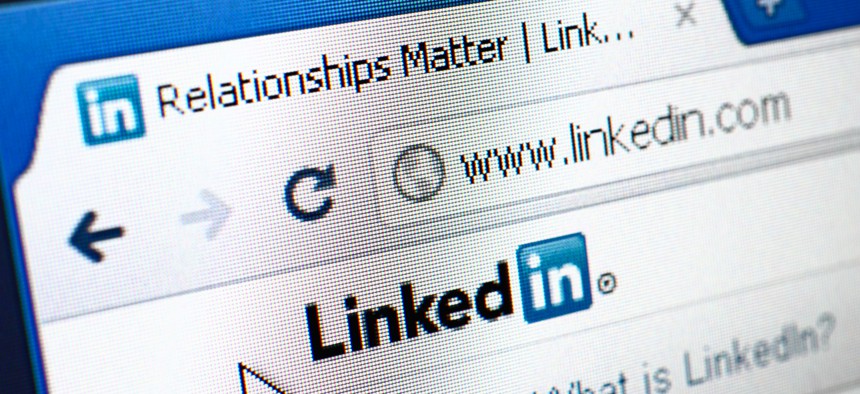What execs need to know about using LinkedIn

Gettyimages.com/ brightstars
The social media platform has several 'powers' that government contractors can wield to build their business and connect with customers.
LinkedIn turns 20 on May 4th. Over the last decade it has become an integral part of the government contracting ecosystem.
However, this does not mean that all, or even most, government contractors use it well. There is untapped power in this platform that can help any government contractor, regardless of the agencies they do business with.
In their annual “Leading Brands” study, GovExec highlights two key elements for companies with high brand recognition: visibility and credibility. I’ve attended the presentation event every year and these two features are constant.
LinkedIn can and should a big part of building your visibility and credibility, but too often, it is not.
LinkedIn is not really complicated, but there are lots of nuances to using the platform well. Rather than go into the nuances, I want to take the 25,000 foot view so executives can see five distinct powerful capabilities where LinkedIn can help grow their business and solidify their relationships with specific customers. My comments apply to large and small contractors, and anyone in between.
This is also intended to show GovCon executives that their roles as leaders needs to extend to their use of LinkedIn.
I will keep this short and high level. If anyone would like to go into more detail, I am always happy to discuss how LinkedIn can help your business - just send me an InMail on LinkedIn!
The power of building a network
This is perhaps the most obvious use of LinkedIn. LinkedIn is the best venue for building and managing relationships, and enhancing the face-to-face relationships you already have. Finding the people you need in your network is not difficult. There are over 2.72 million Feds (DOD, uniformed, IC and civilian) on LinkedIn and I’ve identified 556 “company” pages for federal departments, agencies, operating divisions, and offices. A good strategy for personalizing your outreach is a must, but with discipline and diligence, you can successfully expand your network with intent.
The power of positioning
Every successful contractor has at least one area of expertise. LinkedIn is where you are vetted for the expertise you claim. If you, and your employees, are not clearly enunciating the area(s) of expertise you bring to the market on LinkedIn, your credibility suffers. If you position your company and areas of expertise well, building a network is much easier.
The power of subject matter experts
In order to support your market position, your SMEs need to stand apart from, and above others, claiming the same area of expertise. Carefully building profiles of your SMEs so when prospects view the profile they immediately understand the value your SMEs and your company can bring to their respective agencies. Done well, SMEs attract attention and help win contracts.
The power of ABM
There is no better platform for account/agency-based marketing than LinkedIn. A few short paragraphs ago I cited my research of 556 “company” pages of federal offices on LinkedIn. ABM is predicated on maximizing your connections with a particular customer, then sharing information with them. LinkedIn allows for laser focused searches by agency, title, geography and a host of other factors. Individuals in target accounts can be identified, connected to, and engaged with quickly and effectively.
The power of exponential reach
If your employees are active on LinkedIn, the reach of articles produced by your SMEs, and other company content, becomes exponential. If you have 25 employees each with 500+ connections and they share an article, it goes to at least 12,500 people. Getting your team to understand the value of exponential reach and how it benefits the company is critical. Exponential reach drives views and reinforces your market position. If the employees see executives sharing company posts, and social engagement is actively encouraged by the company, they are more likely to share as well.
Each of these “powers” can help a company grow. Together they provide powerful tools to support sales, business development and marketing.
The caveat is that executive buy-off and use of LinkedIn goes a very long way to drive the message to the front lines of your company. If you as a company executive are not leading by example, your employees are less likely to engage, and you are missing a significant opportunity to gain visibility, expand your market reach and support business development.
Mark Amtower is a consultant, speaker, radio/podcast host, business best-selling author and a Washington Technology columnist. He has been a member of LinkedIn for 19 years.

